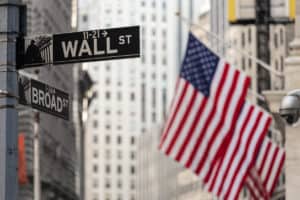 Two years ago, I interviewed several top-level executives at a handful of banks and prime brokers where I asked if they understand the risk of handing cheap leverage to their hedge fund clients.
Two years ago, I interviewed several top-level executives at a handful of banks and prime brokers where I asked if they understand the risk of handing cheap leverage to their hedge fund clients.
What I mean by cheap financing, is that the prime broker is charging extremely low rates for hedge funds to borrow cash to make big bets through complex financial instruments.
The response I got back was mixed:
“I scratch my head and wonder, ‘do people understand the risk?’, whether that is liquidity risk or other financing risks,” said one head of prime services at a Wall Street bank. “In my career, I have definitely seen people try to capture market share, and a way to capture market share is to lower rates,” another said.
From what I gathered, prime brokers had come to the conclusion that to achieve growth, pricing for leverage had to be low. This had been a successful strategy for many of the big banks, as revenues for the business increased 19% across the world’s 12 largest investment banks between 2017-18.
Now, it seems their chickens have come back to roost as Archegos Capital, a relatively unknown family office run by convicted insider trader Bill Hwang, triggered the liquidation of around $30 trillion of US and Chinese stocks and one of the biggest margin calls of all time.
The multi-billion fiasco involved the occasionally shadowy world of derivatives – essentially using the prime brokers’ balance sheet through total return equity swaps, enabling it to pile up leverage to Archegos’ portfolio.
The fallout of Archegos and the default of its margin calls has left some of the biggest banks reeling – Nomura said yesterday that losses could amount to $2 billion; Credit Suisse stated the losses could be “highly significant”, however it has been reported by sources close to the matter that it could be up to $6 billion.
Archegos’ other prime broker partners – Goldman Sachs and Morgan Stanley – were able to avoid such mounting losses by offloading Archego’s portfolio first. Now, the securities division of Japanese bank MUFG is the latest to fall victim to the blowout, and has stated it expects to record a loss of up to $300 million.
When the dust settles and the amount of losses can be fully accounted for, there should be some serious questions to ask (once again!) of Wall Street practices.
First, how was a convicted insider trader – who was also banned from trading in Hong Kong – able to pass the Know-Your-Customer (KYC) checks?
Second, if they were comfortable with Archegos as a client, did they take into account the risks of a fire sale, whereby the collateral embedded in the swaps contracts would be null and void?
Finally, will prime brokers be forced to take a good hard look at why they have provided so much leverage without fully understanding the risks behind their decisions?
The latter could spark a scene similar to the post-2008 financial crisis with regulators and legislators appearing to come down hard on the prime brokerage practices of investment banks.
The incident is a massive wake-up call for the entire industry, and many are striking comparisons to the blow up of Long-Term Capital Management in 1998 – which was at the time the world’s largest hedge fund. The full details behind how Archegos was able to build such a huge toxic portfolio, and how the banks become so exposed will continue to unravel in the days and weeks to come.
By Joe Parsons